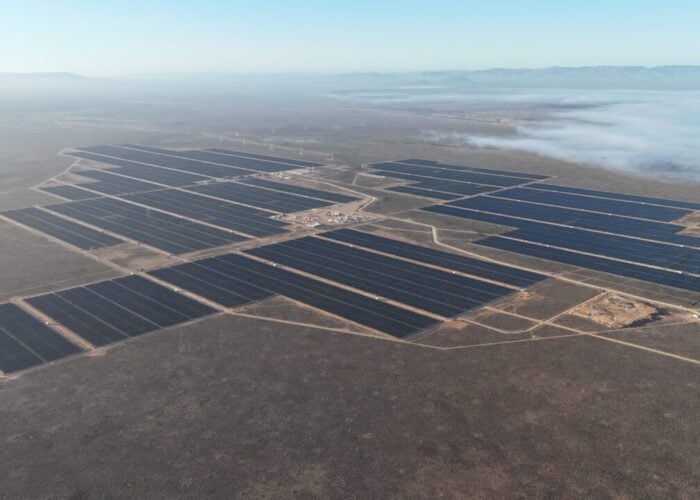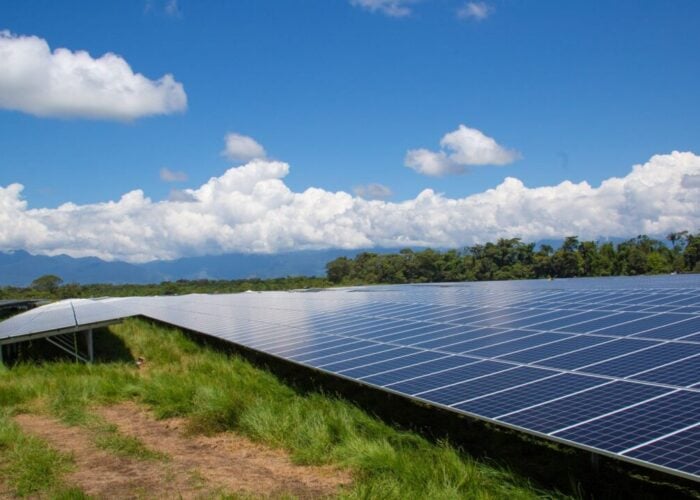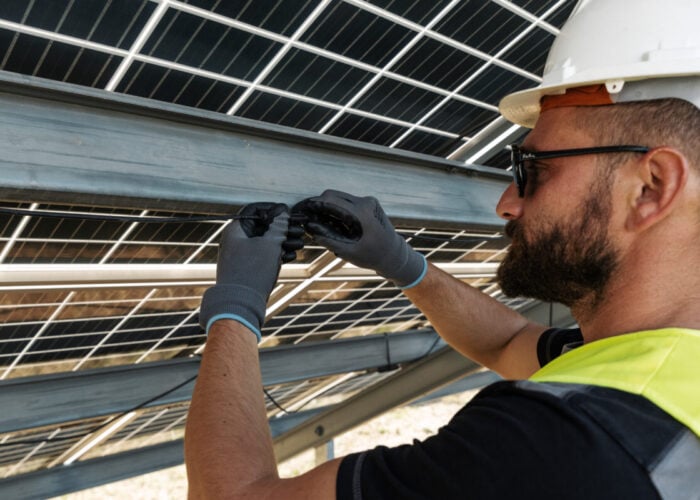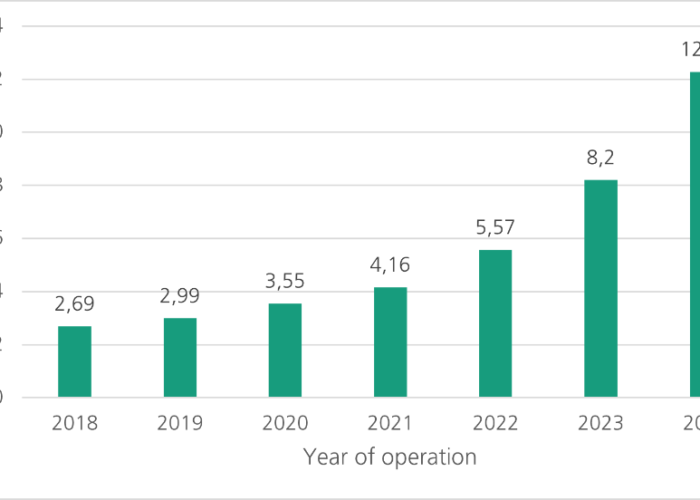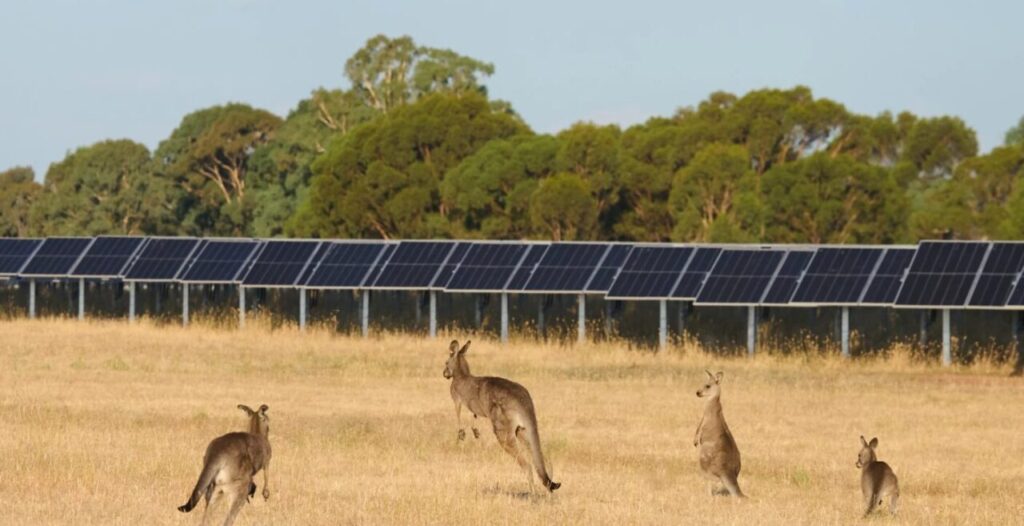
In May 2025, utility-scale and rooftop solar PV dipped by 579GWh month-on-month in Australia’s National Electricity Market (NEM) to 2,861GWh.
According to the data, which has been sourced from Open Electricity, formerly known as OpenNEM, which aims to make NEM and Wholesale Electricity Market (WEM) data more accessible to a broader audience, utility-scale solar generated 1,200GWh, whilst rooftop solar PV generated 1,661GWh.
Try Premium for just $1
- Full premium access for the first month at only $1
- Converts to an annual rate after 30 days unless cancelled
- Cancel anytime during the trial period
Premium Benefits
- Expert industry analysis and interviews
- Digital access to PV Tech Power journal
- Exclusive event discounts
Or get the full Premium subscription right away
Or continue reading this article for free
Although the month-on-month cumulative total dipped by 16.82%, this coincides with the expected seasonal fluctuations as Australia transitions to its colder months of Autumn and Winter.
Indeed, the positive figure of these recorded generation statistics is that cumulative solar generation has increased by 15% year-on-year, with May 2024 seeing Australia’s fleet generate 2,486GWh in the NEM. Below is a full breakdown of monthly solar generation in the NEM on the graph, exclusive to PV Tech Premium subscribers.
There was an increase in both utility-scale and rooftop solar PV generation compared to May 2024. For instance, utility-scale solar generation increased by 196GWh, whereas rooftop solar PV increased by 179GWh.
However, compared to April 2025 generation statistics, rooftop solar PV dipped by 377GWh month-on-month, whereas utility-scale solar decreased by 202GWh.
As seen above, December 2024, the peak of the Australian summer, had the strongest solar PV generation recorded in the NEM in the past 12 months, followed by January. In December, Australia experienced warmer-than-average temperatures nationwide with a national area-averaged mean maximum temperature 2.27 degrees Celsius above average, making it the second warmest on record.
This continued into January 2025, when the country witnessed its second-warmest January since records started. The average temperature for the month was 20.78 degrees Celsius, which is 0.47 degrees Celsius above the 1991-2020 average. Major cities, such as Sydney, had a mean daily maximum temperature of 27.0 degrees Celsius and a mean daily minimum temperature of 19.7 degrees Celsius.
Strong solar generation was recorded throughout these two months, with December seeing solar generate 5,213GWh and January seeing solar generate 5,039GWh.
1 May sees the strongest combined solar generation capacity
The transition to Australia’s colder seasons, which often see less sunlight, is reflected in the daily solar generation statistics. 1 May saw the strongest combined solar generation capacity in the NEM.
Much of the heavy lifting on this day was done by rooftop solar PV, which recorded 72GWh of generation, the highest across the month. Utility-scale solar had its third strongest day of the month with 50GWh, just 4GWh shy of its strongest day on 8 May.
In comparison, April 2025’s strongest days for utility-scale solar generation came on the 8 and 18 April, with 59GWh. The strongest generation for rooftop solar PV came on 6 April with 89GWh.
According to the Australian government’s Bureau of Meteorology, 1 May saw normal weather, with 13.8mm of rain, a maximum temperature of 19.5 degrees Celsius, and 7.6 hours of sunlight throughout the day.
The weakest day for utility-scale solar generation came on 29 May, with a figure of 22.4GWh. This was followed by 27 May, with 25.4GWh, and 26 May, which recorded 26.5GWh.
This is substantially lower than the weakest day in April 2025, which, according to PV Tech Premium‘s last monthly update, came on 20 April with 31GWh. This is a 27.74% decrease between the months’ lowest generation days.
On the other hand, the weakest day for rooftop solar PV generation came on 30 May, when it recorded 40GWh. This was closely followed by 16 and 29 May, which both recorded 41GWh.
The average generation for utility-scale solar was 38.72GWh, whilst for rooftop solar, it stood at 53.58GWh.
Utility-scale solar prices peak at AU$118.48/MWh
The prices for solar PV remained relatively consistent throughout the month, with utility-scale solar averaging AU$51.87/MWh and rooftop solar averaging AU$41.85/MWh.
Utility-scale solar prices peaked on 15 May, when it reached AU$118.48/MWh, just ahead of 16 May, which recorded AU$118.44/MWh.
Both utility-scale and rooftop solar saw days when the average price dipped into the negatives. This can be due to a multitude of factors. However, as noted on our sister site, Energy-Storage.news, it can often be caused by generation creating a surplus in the middle of the day, which means that project and portfolio owners have to pay people to take their energy.
For utility-scale solar, prices dipped into the negatives on four days throughout the month: 3, 4, 7 and 24 May. These days saw prices of -AU$2.63/MWh, -AU$5.17/MWh, -AU$6.04/MWh and -AU$6.97/MWh, respectively.
Negative prices for rooftop solar PV were much more prominent, occurring on six of the days. On 24 May, prices reached a low of -AU$18.06/MWh.
This is lower than the recorded low figure in April 2025, which was -AU$17.47/MWh on 6 April.

